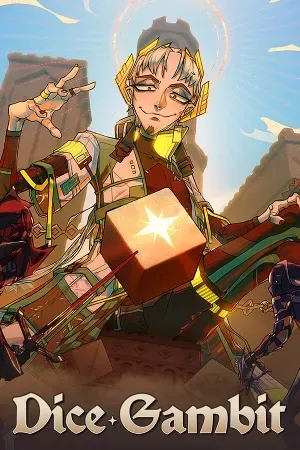Dice Gambit Review: Deep Systems and Glittering Style
Rolling the dice on this dynasty-building tactics adventure
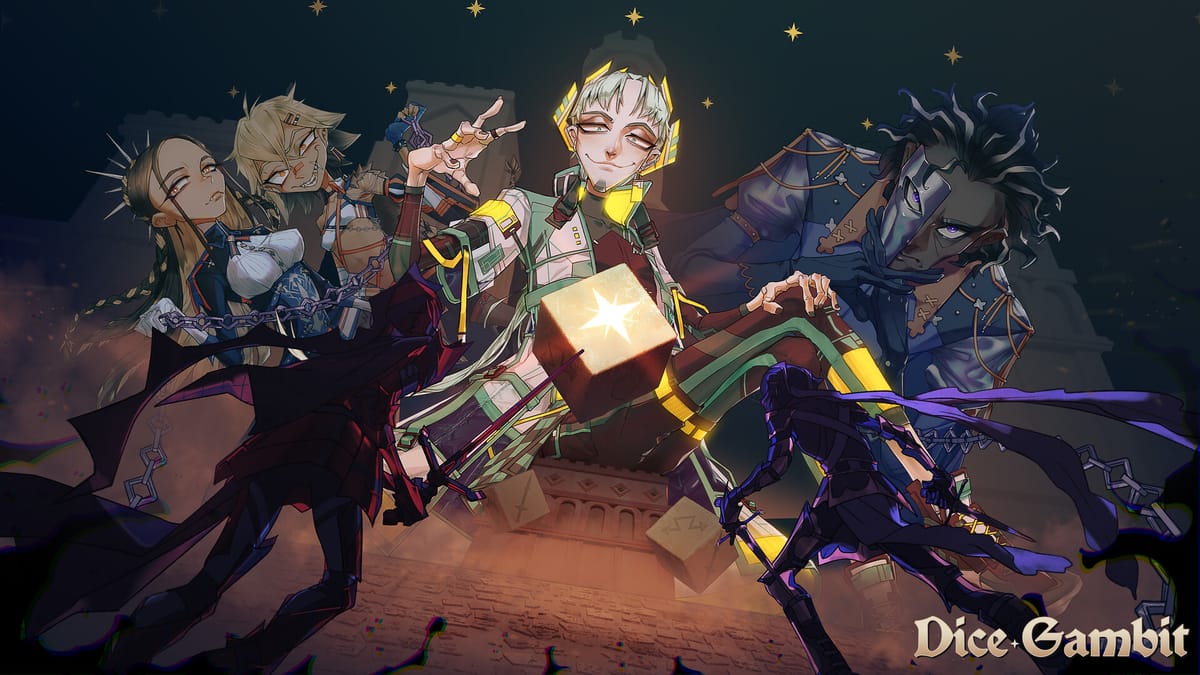
Written by hosomeowa
I first reviewed the indie heartthrob Dice Gambit as a potential entry for this summer’s BitSummit, a games festival in lovely, iconic, sweat-dripping-between-your-cheeks Kyoto. Unsurprisingly, Gambit earned a spot on the floor. Also unsurprisingly, unless I’m mistaken, the Malmö-based devs preferred not to sweat their faces off this year. I did still hover around their station like a lovestruck moth, because I so desperately wanted to snare one of their unfortunate souls into five minutes of my unbridled adoration. Alas.
A caveat
And alas, fanby status aside, I’m not my first choice for a reviewer of this game. I have in fact enjoyed at least a strategy game in my life. But usually, when I get to gushing about one, I’ve generally been won over by its incredible characters or gut-wrenching story. Meanwhile, Gambit’s writing actively repulses me, yet here I am to say this is my favorite 1.0 of the summer.
All this is to say, I’m not one of you cool kids who can play Into the Breach or Age of Empires and dissect and discuss various tactics and systems ad nauseam. So if you're at all compelled, scroll past where I wax lyrical about Gambit’s art, music, and premise, and go straight to my filthy-casual takes on classes, builds, and difficulty modifiers.
Because when I booted up Gambit, I couldn’t turn away from the sumptuous, heavily stylized tapestry of visuals and sound. So yeah, I'm gonna talk about it.
Standing out with style
Because Jesus, would you look at those can-opening cheek bones. Hello, budget-friendly, super-sexy parallax animations. Who’s that, with the tingly strings and highly head-noddable beats? And that’s just the main menu screen.
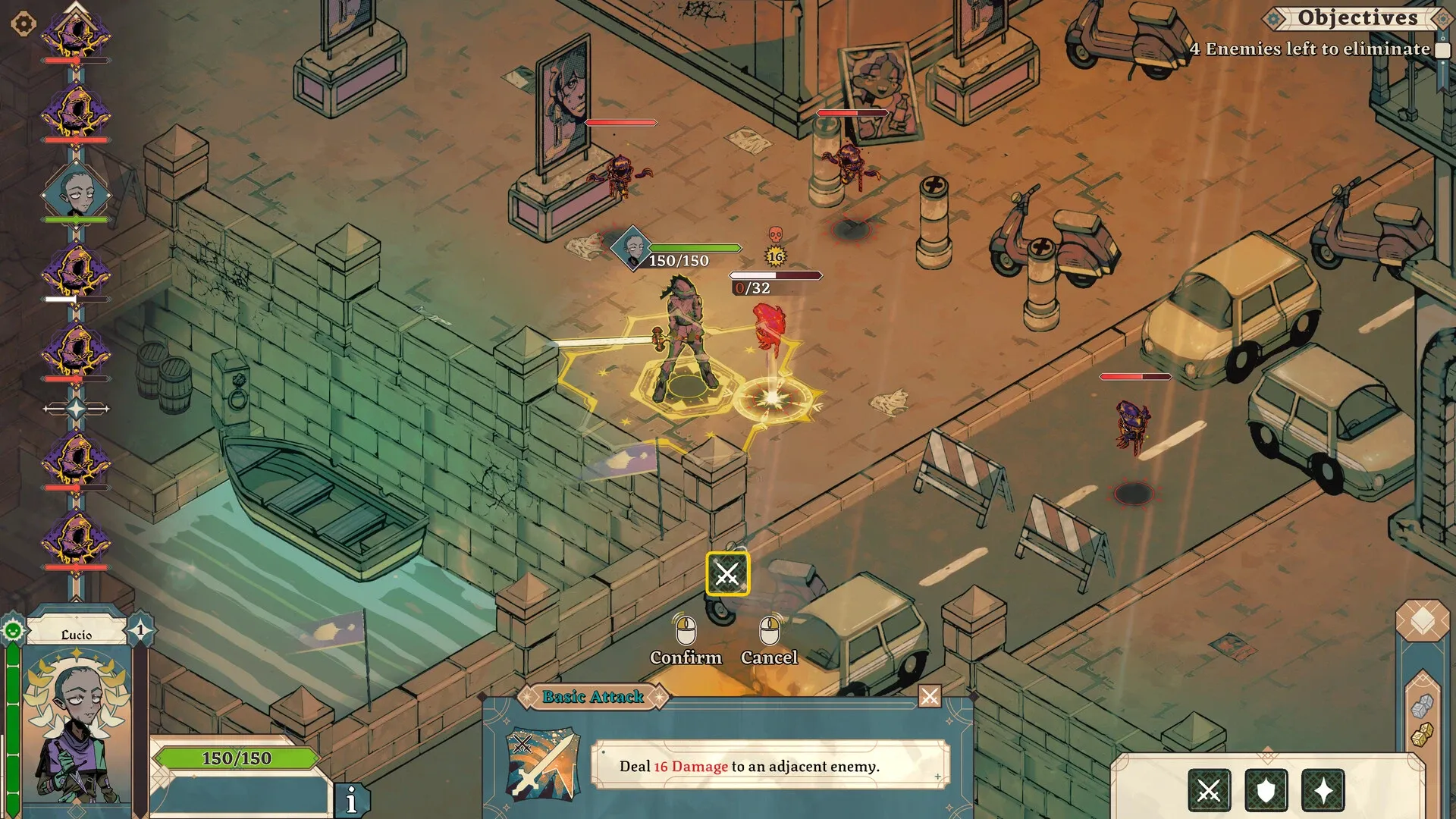
At the start of a new game, a delightfully voiced-over cinematic introduces you to the late medieval city of Neo-Talis. Your city is overrun with Chromatics, monsters resulting from a Black-Death-ish anomaly. As the new Inquisitor riding into town on your gallant steed adorable scooter, it’s your job to stop them. You'll do so by gaining favor with the three houses of Neo-Talis to empower your Inquisition army. No one expects you to succeed.
Frankly, their lack of confidence seems well founded, based on the capital-A Anime facial expressions your Inquisitor's capable of making during character creation. You might be having too much fun picking out their finery and dice patterns to care, though.
Thereafter, Gambit drops you pretty much directly into combat, in a town square awash with terra-cotta red and Aegean blue. At first blush, the hexes and abilities all make it look like your run-of-the-mill isometric RPG, an impression that serves nicely for a quick tutorial. It's later that things get really interesting.
But I never once grew antsy for the real thing, I was so smitten with Gambit's style. I was a book designer before I was a game developer, and with a passing interest in user interfaces, I obsessively click around every screen and analyze button animations frame by frame as a matter of course. And with every mouse hover and click, every screen pan and menu pop-up, I could see Gambit batting its eyelashes at me.
Absolutely everything about its visual design glistens with intentional abundance. I want my kitchen backsplash in the same color and intricate patterns as Gambit's menus and buttons. I love watching my fistful of marbleized dice dance toward my mouse click and roll away with a satisfying glint and clatter. Other reviewers have remarked on the repetitive level assets and backgrounds, but did you notice the Ben Day dots on those backgrounds paying homage to their print manga and comics inspirations? On every screen, something somewhere is bright, new, and beautiful. Another reviewer said there were too many sparkles, and to that I say go play with your hardwood D6s and leave my sparkles out of it.
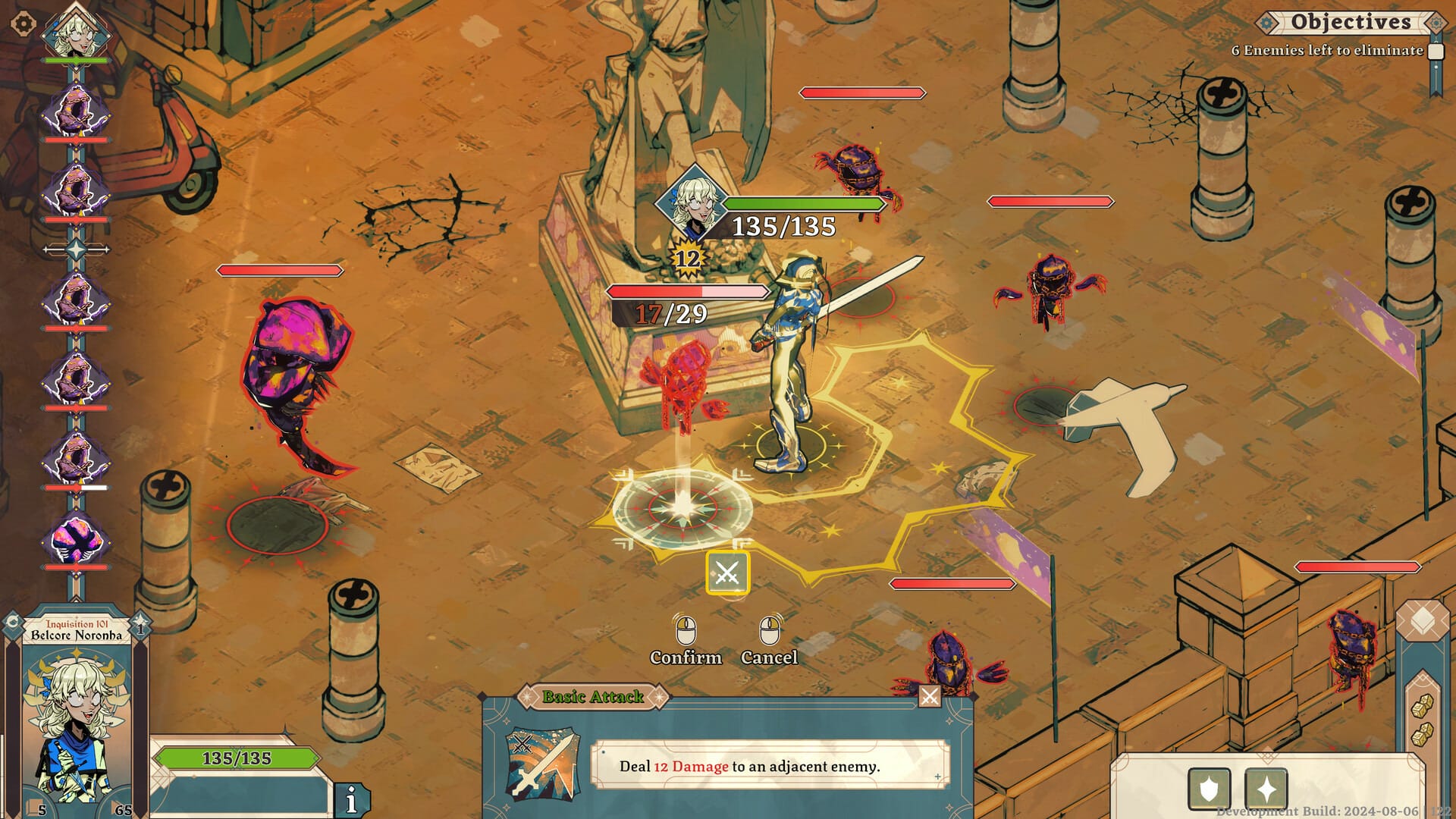
If I had to point out a flaw, I’d squint at the occasionally smushed menu text and apparent absence of accessibility options. I'm not an expert on the latter, although I will talk about the difficulty settings later.
Here’s the last thing I’ll say about what makes Gambit pretty: I’ve seen a few people liken this game to Persona, and the character art clearly being inspired by Japanese animation does nothing to detract from that. And if we’re assuming an anime influence, we’ve got to talk about how the music sounds like something Nujabes would have produced around the time of Samurai Champloo. The synthwave and hip-hop, with what I think is a Portuguese guitar, and Renata Salvado’s spellbinding vocals come together to make unique, memorable fun. It captivated me since our demo-build meet-cute, and I’ve been listening to it while writing for my nine-to-five since.
Okay, fine. Now, I’m going to talk about something that isn’t so pretty.
A fun premise, functionally delivered
If the visual and audio design of Gambit is a statement-piece tapestry, and the dynastic Inquisition story premise is the decorative brass rod ready to hang the tapestry in my foyer, then the writing is, like, the fact that the tapestry doesn’t fit unless I hammer-and-nail it sideways in my first-year dorm room. The handful of devs that make up Chromatic Ink have absolutely killed it with their art, audio, gameplay depth, and narrative design. But nowhere does the budget show more than in the writing.
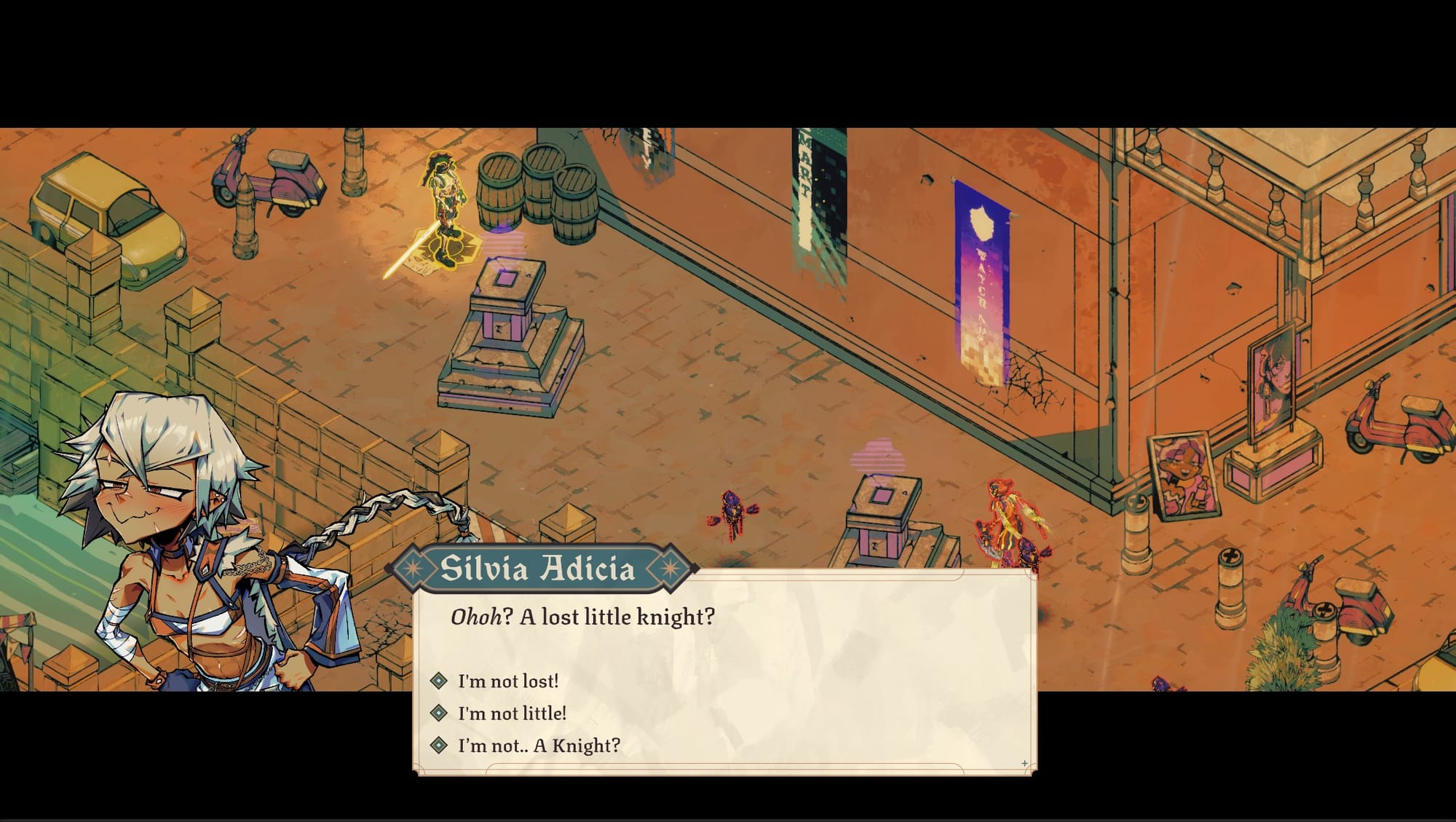
And hey, that’s where most players want it. Except I was growing increasingly resentful for having to click past valuable information spoken by characters who communicate exclusively in exclamation points. I became my worst enemy: the dialogue skipper.
Which is fine. No one is playing Gambit for its poetry.
But the story does provide a great framework for the gameplay. It’s got a familiar setting—that is, the Catholic Inquisition, except instead of torturing and executing innocent Jews and Muslims, you’re smacking a bunch of blob-shaped Chromatics with plasma attacks. And to get any help beating back the Chromatics, you have to gain the favor of Neo-Talis's three ruling families: the military one, the idol one, and the science-y one.
You gain said favor by completing quests, and Gambit generally presents you with a choice of which household’s quests to take on. In theory, you could hyper-focus on beefy Vanguard builds, though I'd recommend diversification. As far as I’ve been able to keep track, quest types themselves are limited: escort missions, where you might fight enemies while sticking close to a cowardly robot; timed objectives where you grab the thing, kill the thing, or deliver the thing that turns out to be ice cream; and clear-the-room quests with increasingly mean blobs (why—and what—are they dripping?).
Personally, I found the faction characters to be only as interesting as their dialogue, and since we all know I'm jerk about that, we can move on.
The characters I do find interesting are actually in your own home.
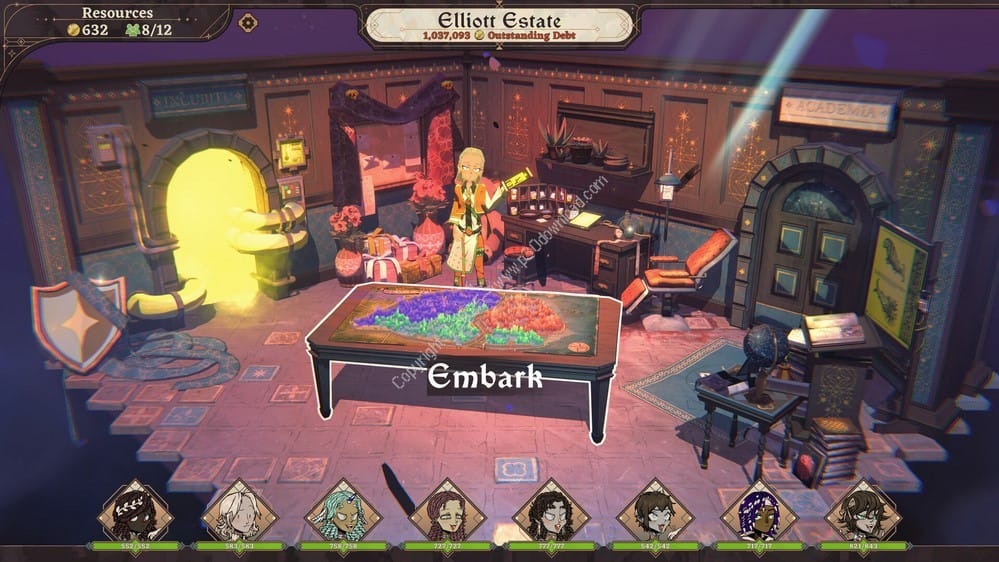
Raising perma-dead Inquisitors
Apparently Neo-Talis doesn't have the budget for a standing army, because somehow it makes more sense for you, the Inquisitor, to grow your own. And I do mean grow in the medieval sense of making enough babies to help run the business, even if you lose a few along the way.
See, I went into Gambit hoping to build meaningful relationships with Neo-Talis’s literally colorful citizens. Don’t do that. Don’t even get too attached to your player character, whom you so painstakingly designed during character creation. There's very little preamble or fanfare before you have to marry them off to one of the two randos who show up at your door.
Said rando will provide half the DNA for your offspring. With a multi-generational Inquisition, you get to select which Inquisitors go out to smack baddies on the expedition maps—and going out lowers their stamina, which lowers their stats. Inquisitors who stay home get to rest—which recharges their stamina, which raises their stats. Better stats help you complete missions, which helps you win faction favor, which unlocks stackable skills and buffs from each faction's skill class. Even in Act One, I really did need an army of varied builds to cycle through, since the story mission required completion in six turns. Otherwise, the Inquisition failed, and the plague continued.
(This, America, is why you don't gut the CDC.)
If you're about to squick out of this baby-making feature, don't worry: your offspring are sprung full-grown from sci-fi hand-waving. It's great. The hard part is planning each baby's build and deploying them in carefully selected, complimentary pairs. Deploy two squishy builds and you'll have to watch your beautiful children get perma-dead.
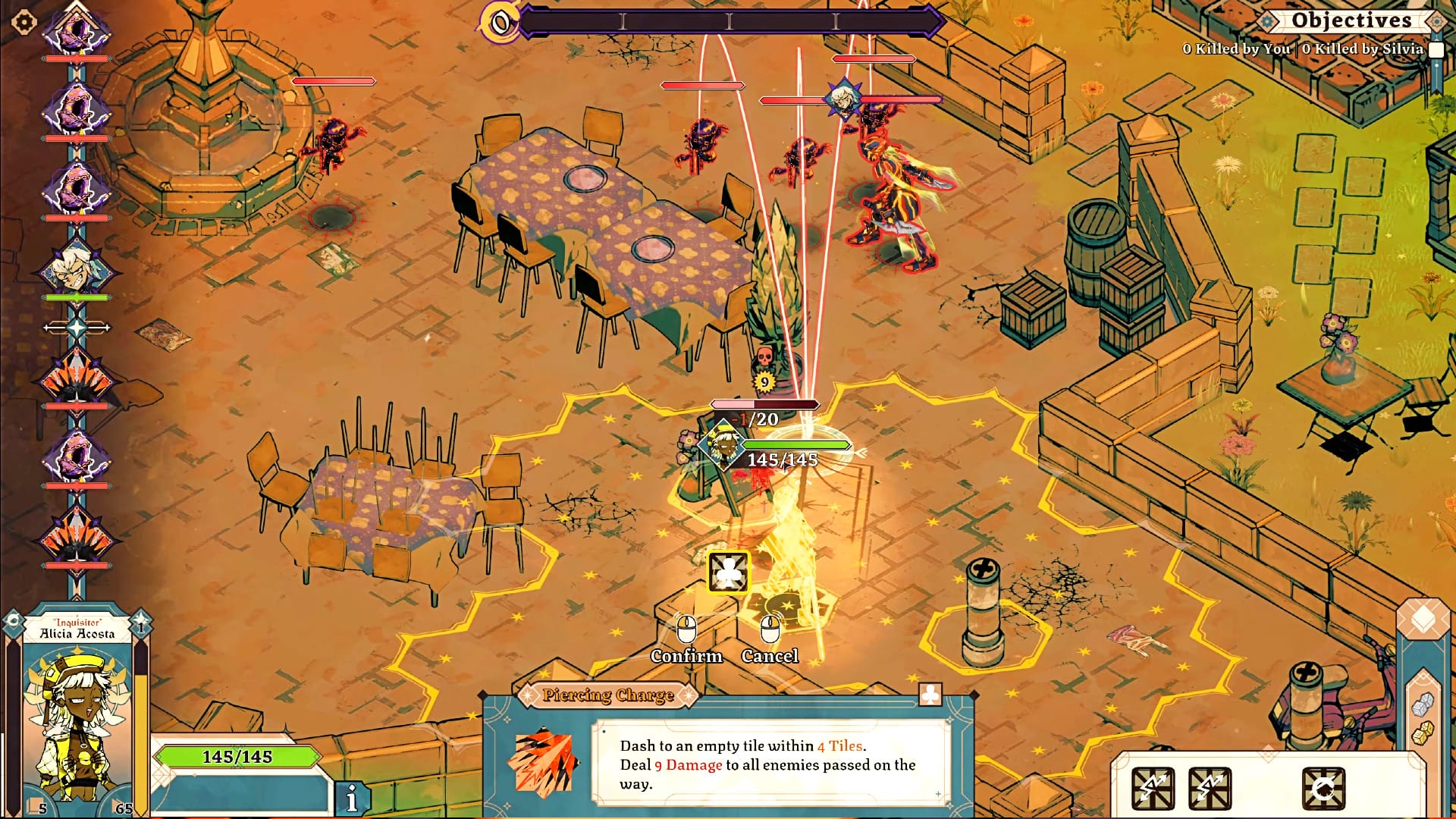
That’s where you’ll have fun, you cool kids with big brains. As your first Inquisitors level up, suitors with better stats come a-knockin'. Their stats influence the stats of your offspring. You'll use your sci-fi- baby-soldier incubator to make different builds, and marry your children off to increasingly powerful suitors to make more baby-soldiers. You really can’t go developing favorites in this game. Deploying your favorites too often results in their exhaustion, stat decline, and likely perma-death. This kind of makes Gambit roguelike, which I found to be quite fun on the recommended difficulty.
I haven’t played with any of the difficulty modifiers, but here, Chromatic Ink deserves every blue ribbon on its bridle. They've provided five preset difficulties plus one custom setting, with seemingly endless possible degrees of adversity. Some settings modify the health you start with; others do that, but then add back in health half the amount of damage you dealt in your turn. Some modifiers expand the expedition maps. Want so many enemies you'll choke on them? Go nuts.
Even the recommended settings provide enough variety that, sometimes, I don’t know where that extra die comes from, or why I've run out of them at the start of my turn, or whether I'm going to get one or two re-rolls, or—oh my god, the floor's on fire.
So, maybe my dialogue-skipping gets the best of me, or maybe Gambit could stand to beef up their tutorials. Honestly, you’ll have to tell me. But you’ll have to stop throwing those dice first.
The summer indie champion of my heart
One of the biggest compliments I can pay a video game these days is that it’s coherent. It looks and moves as a whole, not like a pin-the-tail-on-the-donkey come to life. Nothing about Gambit’s choices feels tacked-on or random. Everything coheres. And it was probably the highlight of my BitSummit, even if I didn't get to trap any souls.
And if you're a curmudgeon like me, you’re still likely to be beside yourself with the sparkles, polish, and possibilities here. I haven’t explored Gambit's gameplay systems as well as I’d like, but some of you have already gone riding them off into the sunset.
That’s probably a good indicator that we haven’t heard the last of Chromatic Ink.
